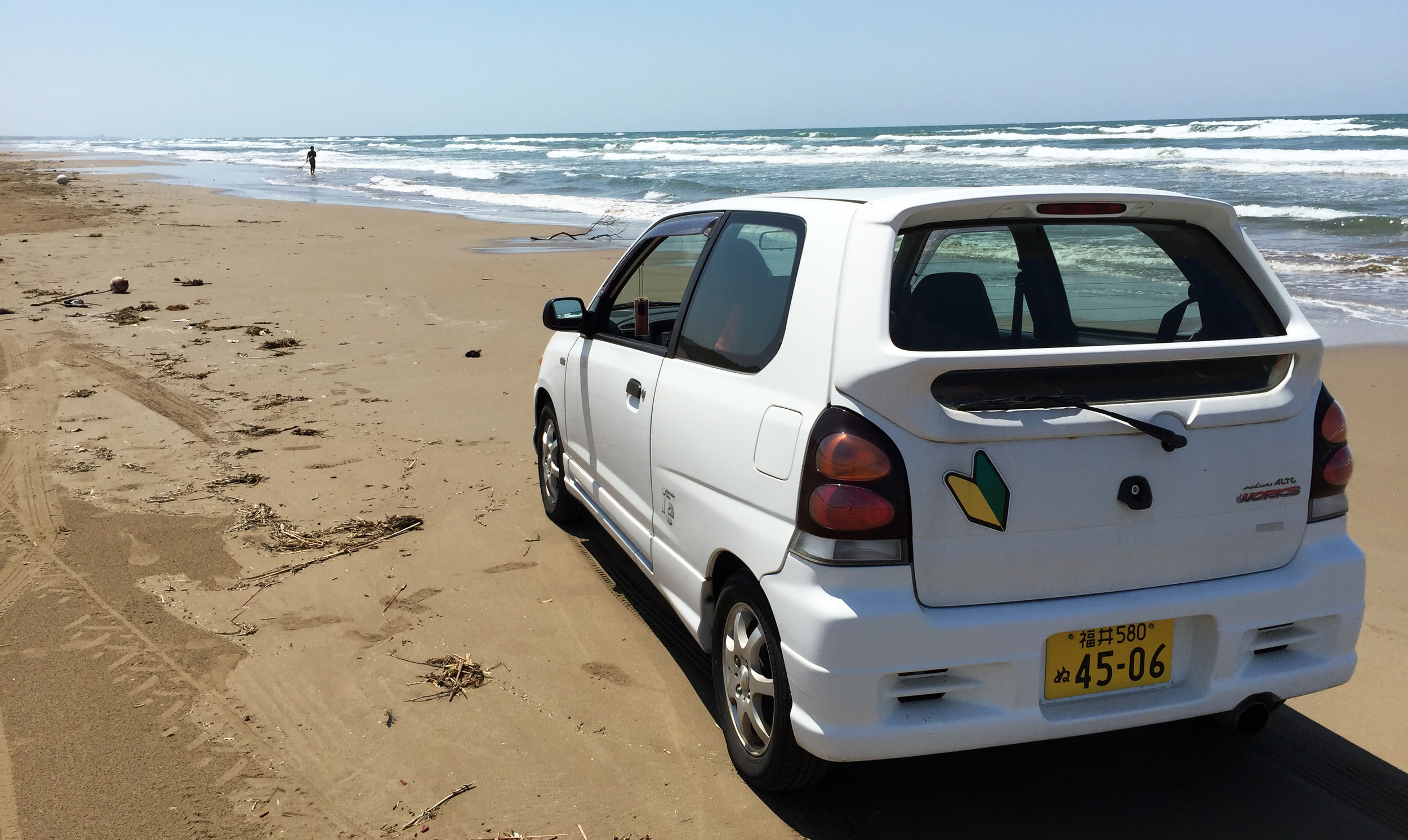[ Alto Works ] Driving Impressions
Now that the maintenance is out of the way, we can focus on putting the HA11S Alto through some paces and I can give you a more honest review of how it exactly drives by taking it on its first 3-hour road trip to Osaka. First off, the car starts up quickly and smoothly without excessive cranking; good to know the fuel pump, battery, and starter are in good condition. The engine idles and shakes the cabin a bit, somewhat very typical with other unbalanced 3-cylinder engines of this age and mileage. The car accelerates smoothly, with little issues or hesitation between gear shifts.
Power delivery is acceptable, with the turbo spooling up notably around 2500 RPM and trailing off before 6000 RPM. This car only has 63 HP to pull its 670 kg (1477 lbs) listed weight, so it doesn’t pull fast or hard. But it’s not bad at all, actually. The sensation of speed is helped by the relatively low driving position and small roads. If left on “Drive,” the automatic transmission holds the gear until near the redline at around 7000 RPM when the throttle is hammered down. Of course, it chooses to upshift at that point or at the slightest release of the throttle, as to be expected for traditional torque converter boxes. Considering that speeds are legally limited to about 30 km/hr (19 MPH) local roads to 50 km/hr (31 MPH) city roads, this car drives fast enough to be “illegal” within a few seconds.
In comparison to the numerous other kei cars I have driven over the years, this car pulls as well as all of them. While the power-to-weight ratio is less than this Alto, my last HA12S Alto felt a bit peppier, likely due to the 5-speed manual transmission it had. But this is one of the lightest and quickest FWD kei cars that have a plethora of aftermarket support, so it’s perfect as a base car to modify. The small turbo has just enough boost to keep things interesting, but the engine note is harsh when thrashed and the exhaust note is boring. The unknown aftermarket blow-off valve is fun to hear, whooshing and releasing pressure when the throttle is let off. Whenever I get to replacing the exhaust, I’m sure that is when I’ll enjoy this whole experience more.
Unfortunately, the car has a terrible on-center feel, with quite a bit of steering play, quite typical of other kei cars of the 90s. I wish it was a bit crisper and sharper like my last Alto, but it’s far from terrible. The car has a decent feel in slow speed corners, so I took the car out to some curvy roads to see how the car behaves when pushed a bit more. Immediately, I can tell the car does communicate quite a bit through the steering wheel. There is a bit of honestly in an old car that bumps, rattles, and shakes in corners, as every physical sensation is relayed to the driver. Suspension is decently stiff for an older high-mileage car, so I wonder if it has been replaced at some year. It does not bounce, float, or dive on braking or accelerating. The grip, particularly on wet surfaces, is terrible due to the age and quality of the tires, so it has a tendency to understeer. However, the short wheelbase encourages throttle control to rotate the rear and it is quite easy to do so when provoked.
The non-ABS brakes are stiff, necessitating a bit of pressure to push the pedals. While it is better than soft brakes with no feel, as that might indicate air or leaks, hard brakes could indicate a faulty brake booster, though according to a quick preliminary pressure check, it is ok. Maybe it could be problematic rear drums or pistons. No pulsing, noises, or reverberations otherwise.
Speaking of rear drums, sadly the ie and Limited packages have those as standard. Only the RS/Z and R models had rear discs. Of course, it isn’t necessarily a bad thing, as drums are very low maintenance and more than adequate for most non-sport FWD cars.
So how does it feel sitting in the car? The Sports Limited bucket seats are respectable and do a decent job of holding my lower back in place, but I do wish the side and thigh bolstering were a bit more aggressive. The non-adjustable steering wheel has a terrible, truck-like angle, facing more upwards than I would like, considering my typical seating position. The cabin is typically noisy and lacks much sound deadening like many 90s economy cars, so wind and road noise impede in the cabin, compounded by the age and crumbling seals.
The lack of amenities is a charm for me: no automatic folding mirrors, no power mirrors, basic A/C and front speakers, and power windows. That’s all one really needs in a daily-driven project car. Heck, with the rear seat back folded, there is plenty of room for a set of spare tires and tools!
For my steely-eyed readers, you might be able to catch some modifications already in progress on the car. Next week, I'll start to showcase some of those changes.





